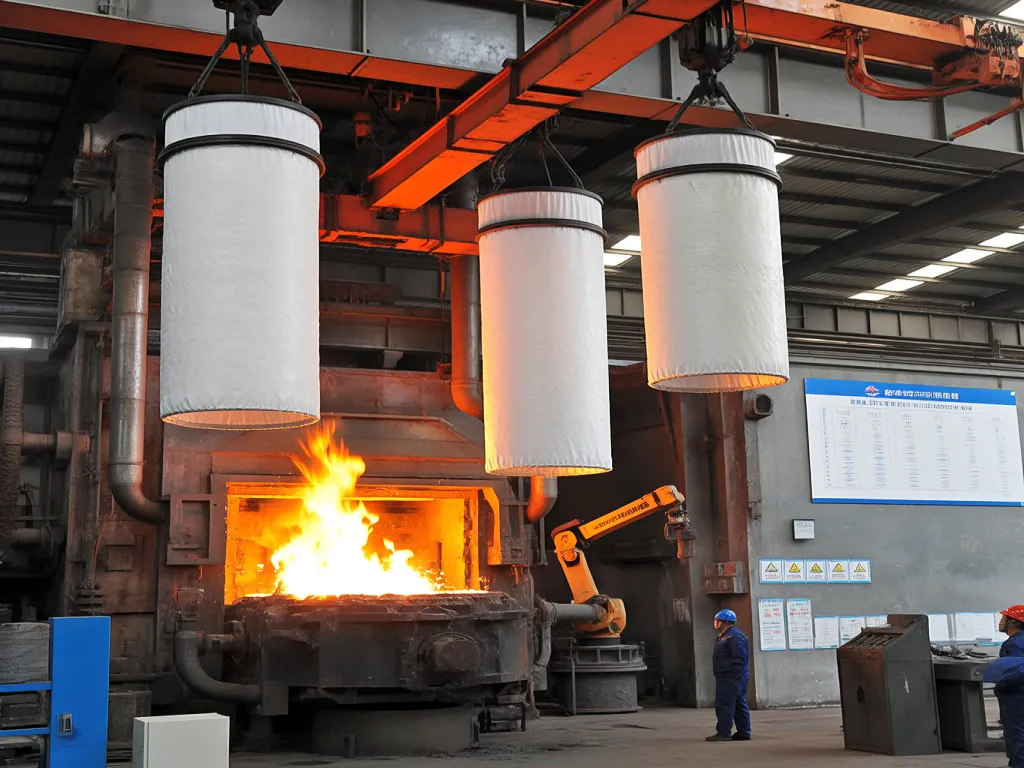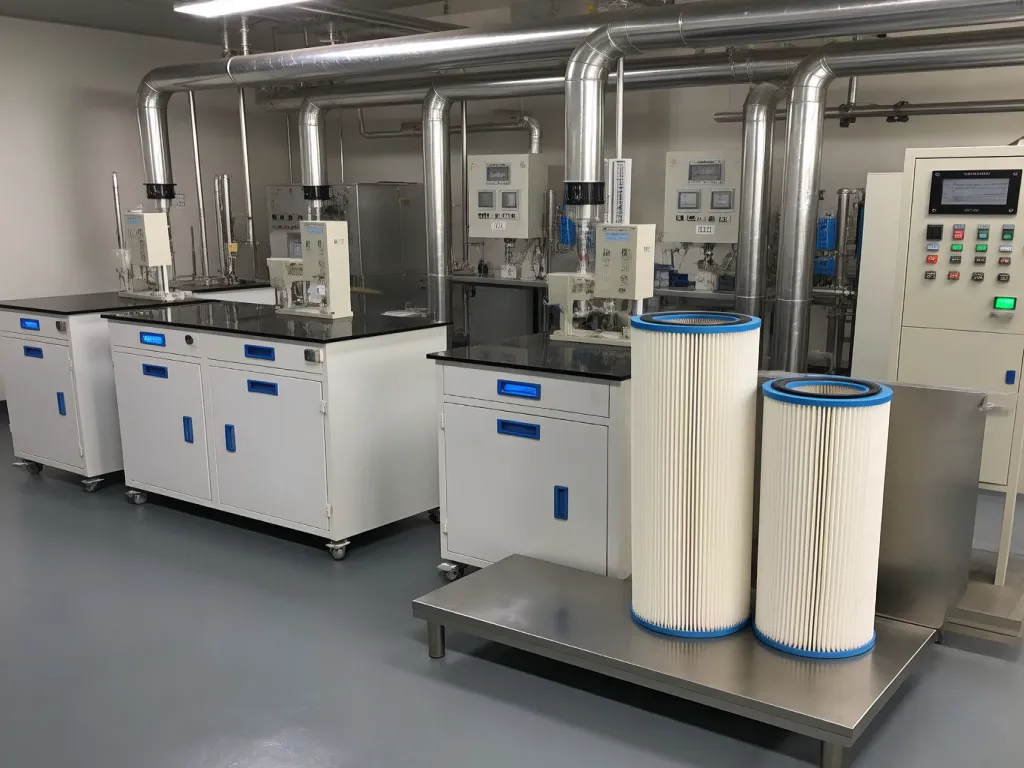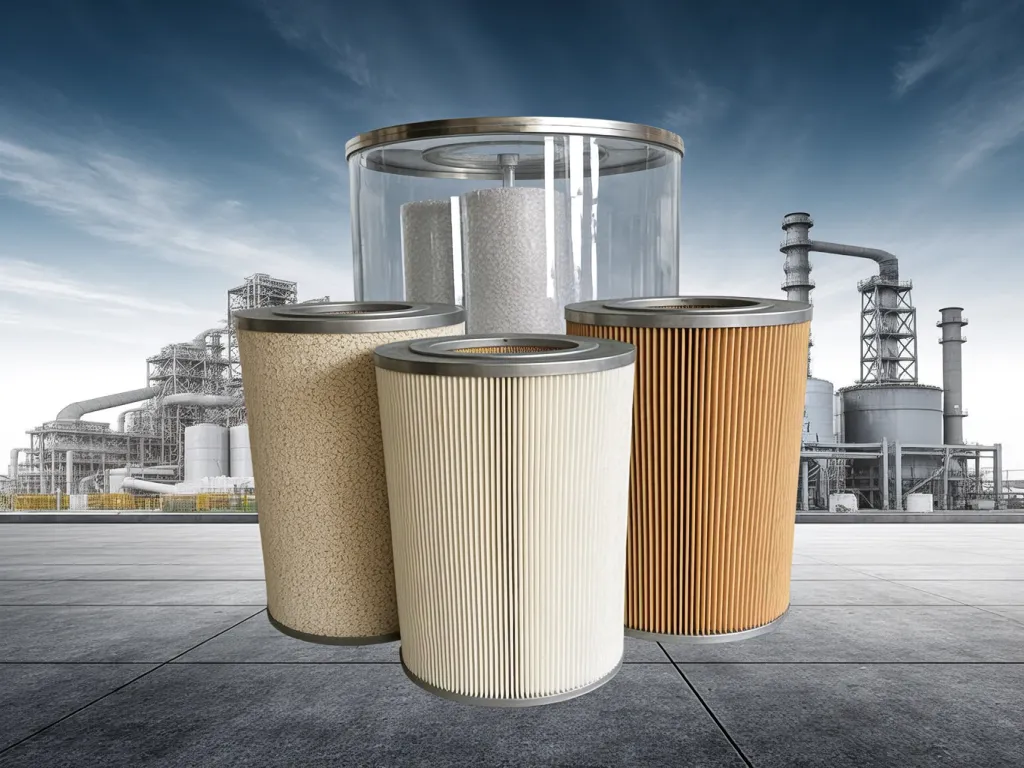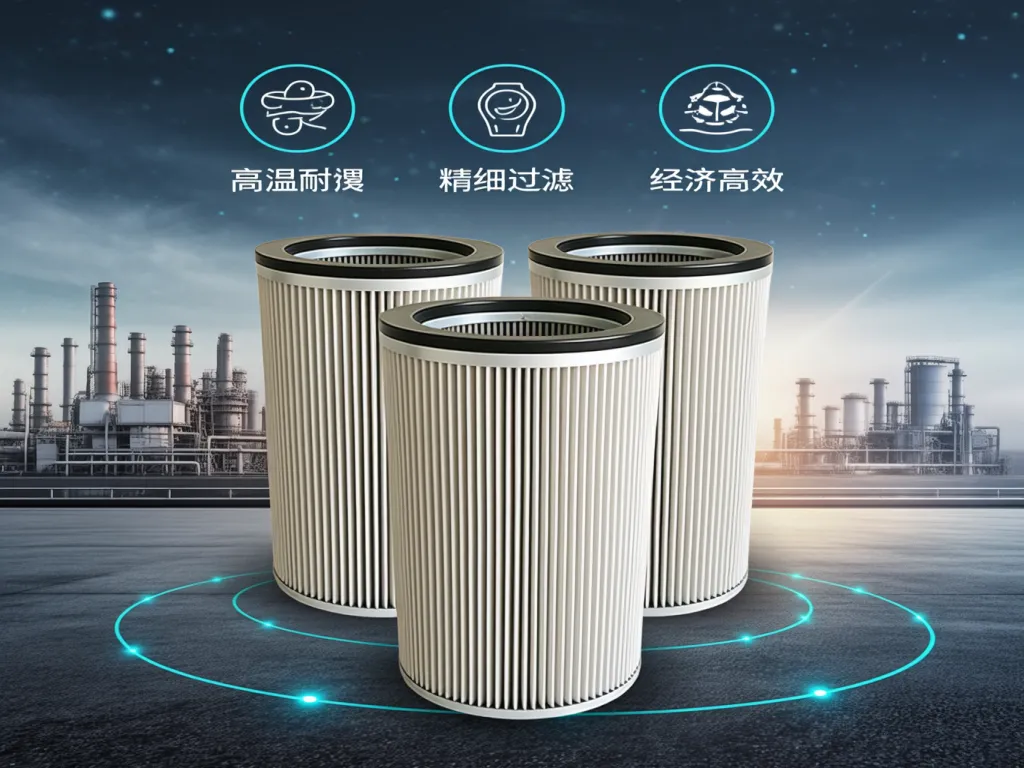High-Temp Heroes: Industrial Filter Bag Guide

In industries where extreme heat is the norm, selecting the right industrial filter bag isn’t just about efficiency—it’s about survival. From steel mills to cement factories, the wrong filter bag can mean costly downtime, compromised safety, or even environmental hazards. But how do you navigate the maze of materials, temperatures, and applications to find your perfect match? This guide dives deep into the science of heat-resistant industrial filter bags, comparing materials, dissecting real-world scenarios, and arming you with a step-by-step selection framework. Ready to transform your filtration strategy?

Temperature-Resistant Materials Showdown: A Detailed Comparison of Polyester, PTFE, Fiberglass, and More
When it comes to industrial filter bags, the ability to withstand high temperatures isn’t just a nice feature—it’s a necessity. In industries like steel production, cement manufacturing, and waste incineration, where temperatures can soar, choosing the right material for your filter bag can mean the difference between efficient operation and costly downtime. So, let’s dive into a head-to-head comparison of some of the most common materials used in industrial filter bags: polyester, polytetrafluoroethylene (PTFE), and fiberglass. We’ll explore their temperature resistance ranges, pros, and cons to help you make an informed decision.
Polyester: The Versatile Workhorse
Polyester is a popular choice for industrial filter bags, and for good reason. It’s relatively inexpensive, durable, and has a decent temperature resistance. Typically, polyester filter bags can handle continuous operating temperatures up to around 130°C (266°F), with short-term spikes up to 150°C (302°F). This makes them suitable for a wide range of applications where temperatures aren’t extreme. For instance, our durable polyester industrial filter bags are designed to excel in moderate-temperature environments. Pros:
- Cost-Effective: Polyester is one of the more affordable materials for filter bags.
- Good Chemical Resistance: It resists most acids and alkalis, making it versatile.
- Easy to Clean: Polyester filter bags can be easily cleaned and reused, extending their lifespan.
Cons:
- Limited Temperature Range: Not suitable for high-temperature applications.
- Prone to Hydrolysis: In humid environments, polyester can degrade over time.
PTFE (Polytetrafluoroethylene): The High-Temperature Champion
If you’re dealing with extremely high temperatures, PTFE is your go-to material. PTFE filter bags can withstand continuous operating temperatures up to 260°C (500°F), and they can even handle short-term exposure to temperatures as high as 280°C (536°F). This makes them ideal for industries like waste incineration and cement production, where temperatures can reach scorching levels. Our high-efficiency PTFE industrial filter bags are crafted to thrive in such extreme conditions. Pros:
- Exceptional Temperature Resistance: PTFE can handle the hottest environments.
- Chemically Inert: It resists almost all chemicals, making it incredibly durable.
- Low Friction: PTFE has a low coefficient of friction, which can reduce clogging and improve airflow.
Cons:
- Expensive: PTFE is one of the priciest materials for filter bags.
- Brittle: It can be more prone to cracking and breaking compared to other materials.
Fiberglass: The Heat-Resistant Contender
Fiberglass is another material that shines in high-temperature applications. Fiberglass filter bags can typically handle continuous operating temperatures up to around 260°C (500°F), similar to PTFE. However, they’re often more affordable and can be a good alternative if you’re looking for a balance between cost and performance. Our high-efficiency fiberglass industrial filter bags offer an excellent combination of heat resistance and affordability. Pros:
- High Temperature Resistance: Fiberglass can handle extreme heat.
- Affordable: Compared to PTFE, fiberglass is more budget-friendly.
- Good Dimensional Stability: It maintains its shape and size even at high temperatures.
Cons:
- Abrasive: Fiberglass can be rough on equipment and may cause wear over time.
- Limited Chemical Resistance: It’s not as chemically resistant as PTFE, so it may not be suitable for all environments.
Choosing the Right Material for Your Needs
So, how do you choose between polyester, PTFE, and fiberglass? It all comes down to your specific application. If you’re dealing with moderate temperatures and need a cost-effective solution, polyester might be your best bet. For extreme heat environments where chemical resistance is crucial, PTFE is the way to go. And if you’re looking for a balance between cost and high-temperature performance, fiberglass could be the perfect fit. Additionally, for those with unique requirements, our custom industrial filter bags can be tailored to meet your specific needs. Remember, the right industrial filter bag material can make all the difference in your operation’s efficiency and longevity. By understanding the temperature resistance ranges, pros, and cons of each material, you can make an informed decision that keeps your production running smoothly, even in the hottest conditions.

High-Temperature Application Scenarios: Analyzing Specific Needs and Adapted Filter Bag Types for Steel, Cement, and Waste Incineration Industries
When it comes to high-temperature industrial environments, the choice of industrial filter bags isn’t just about filtering efficiency—it’s a critical decision that impacts safety, performance, and cost-effectiveness. Let’s dive into the unique demands of three major high-heat sectors: steel, cement, and waste incineration, and explore which filter bag types rise to the challenge.
Steel Industry: Battling Extreme Heat and Abrasive Particles
The steel industry operates under some of the most extreme conditions imaginable. Blast furnaces, electric arc furnaces, and sintering plants generate temperatures exceeding 1,200°C (2,192°F). Here, the primary concerns are thermal stability, chemical resistance, and mechanical strength.
Why Standard Bags Fail:
Conventional filter materials like polyester or acrylic would melt or degrade rapidly in these conditions. Even some ‘high-temperature’ alternatives struggle with the combination of heat and abrasive particles from iron ore, coke, and slag.
The Winning Solution: Glass Fiber with PTFE Coating
For primary filtration in steel plants, glass fiber filter bags with a PTFE (polytetrafluoroethylene) membrane coating are often the go-to choice. Why? Glass fiber can withstand continuous temperatures up to 260°C (500°F) and peak temperatures even higher, while PTFE provides:
- Superior chemical inertness (resists acids, bases, and organic solvents)
- Exceptional particle release during pulse cleaning
- Low friction surface that reduces abrasion
Alternative for Lower Heat Zones:
In areas like converter gas cooling and dedusting, where temperatures are slightly lower (around 200-300°C), aramid (Nomex) filter bags with a silicone coating offer excellent durability and cost-effectiveness. For a more detailed look at how industrial filter bags can be customized for specific dust collection needs, explore our durable custom solutions.
Cement Industry: Handling Dusty Heat and Alkaline Environments
Cement kilns operate at temperatures between 800-1,200°C (1,472-2,192°F), producing highly alkaline dust containing calcium oxide, silica, and other compounds. The challenge here is balancing thermal resistance with resistance to alkaline attack and abrasion.
The Dual Threat:
Cement dust isn’t just hot—it’s chemically aggressive. Standard filter materials would quickly degrade from both the heat and the alkaline particles. Even some ‘high-temperature’ fabrics fail prematurely due to chemical breakdown.
The Ideal Choice: Acrylic-Needled Felt with PTFE Treatment
For preheater and cooler applications, acrylic-needled felt filter bags treated with PTFE have proven highly effective. Key advantages:
- Continuous operating temperature up to 160°C (320°F), with short-term peaks to 190°C (374°F)
- Excellent resistance to alkaline conditions
- Good abrasion resistance from the needled felt structure
- PTFE treatment enhances dust release and chemical resistance
For Higher Heat Zones:
In the calciner and kiln inlet areas where temperatures approach 300°C (572°F), basalt fiber filter bags with a PTFE coating offer superior performance. Basalt’s natural composition provides excellent thermal stability and chemical resistance.
Waste Incineration: Corrosive Gases Meet Intense Heat
Waste incineration plants face a triple threat: high temperatures (850-1,100°C/1,562-2,012°F), corrosive gases (HCl, SOx, NOx), and potentially toxic particulates. The stakes here are environmental compliance and worker safety.
The Corrosion Challenge:
Flue gases from waste combustion contain aggressive acids and heavy metals. Standard filter materials would corrode rapidly, leading to costly downtime and potential environmental violations.
The Ultimate Solution: PTFE Membrane Filter Bags
For waste incineration applications, 100% PTFE filter bags or PTFE-membrane-laminated fiberglass bags dominate. Why PTFE rules here:
- Operates continuously up to 260°C (500°F)
- Completely inert to virtually all chemicals found in incinerator flue gas
- Smooth surface prevents particle penetration and improves cleaning efficiency
- Long service life reduces replacement costs
Alternative for Lower Temperature Zones:
In secondary dust collection systems where temperatures are below 200°C (392°F), P84 (polyimide) filter bags with a PTFE coating offer excellent performance with:
- High thermal stability (up to 240°C continuous)
- Good chemical resistance
- Lower cost than pure PTFE
Making the Right Choice: It’s Not Just About Temperature
While temperature tolerance is crucial, remember that high-heat applications often come with secondary challenges like chemical exposure, abrasion, and moisture. The most successful filter bag selections consider:
- Peak vs. continuous temperature: Some materials handle short heat spikes better than sustained high temperatures
- Chemical environment: Acidic, alkaline, or organic compounds may require specific coatings
- Particle characteristics: Abrasive, sticky, or hygroscopic dusts need different surface treatments
- Cleaning method: Pulse jet, reverse air, or shaker systems affect bag durability
Have you ever selected a filter bag based solely on temperature rating, only to discover it failed prematurely due to another factor? It’s a common pitfall—one that comprehensive application analysis can help you avoid.

Selection Guide: Case Studies on Comprehensive Selection Based on Temperature Range, Filtration Accuracy, and Cost
When it comes to selecting the right industrial filter bag for your high-temperature applications, the decision-making process can feel overwhelming. You’re not just picking a filter; you’re ensuring the safety, efficiency, and longevity of your entire industrial operation. So, how do you navigate through the myriad of options and make an informed choice? Let’s dive into a practical selection guide, enriched with real-world case studies, to help you understand how to balance temperature range, filtration accuracy, and cost effectively.
First off, understanding your specific temperature requirements is crucial. Imagine you’re operating in a steel plant where temperatures can soar above 260°C (500°F). Here, a standard polyester filter bag simply won’t cut it. Instead, you’d need a high-temperature industrial filter bag made from materials like PTFE or glass fiber, which can withstand such extreme conditions without degrading. But how do you know which material suits your needs best?
Let’s consider a case study from a cement manufacturing facility. They were facing frequent filter bag failures due to high temperatures and abrasive particles in the flue gas. Initially, they opted for a cheaper polyester option, but it quickly deteriorated, leading to increased downtime and maintenance costs. After consulting with experts, they switched to PTFE-coated filter bags. These bags not only handled the high temperatures but also offered superior resistance to chemical corrosion and abrasion, significantly reducing replacement frequency and operational costs.
Now, let’s talk about filtration accuracy. It’s not just about withstanding heat; your filter bag must also efficiently capture the desired particles. For instance, in a waste incineration plant, the goal is to trap harmful particulates and gases. Here, a filter bag with a high filtration efficiency rating, such as those made from fine glass fibers, is essential. These bags can capture even the smallest particles, ensuring compliance with environmental regulations and protecting worker health.
But what about cost? It’s a balancing act. While high-performance materials like PTFE come with a higher price tag, they often offer better longevity and lower total cost of ownership. Consider a scenario where a food processing plant needed a filter bag for their oven exhaust. They initially hesitated at the cost of PTFE bags but realized that the reduced downtime and maintenance expenses outweighed the initial investment. Over time, the PTFE bags proved to be more cost-effective, delivering consistent performance without frequent replacements.
So, how do you put this all together? Start by assessing your temperature range. Identify the maximum and average operating temperatures. Next, determine your filtration needs. Are you dealing with fine particulates, coarse dust, or a mix? Finally, factor in your budget, but remember to consider the long-term costs, not just the upfront price.
In another case, a chemical plant dealing with corrosive gases at moderate temperatures opted for a hybrid solution. They used a glass fiber base for temperature resistance and added a PTFE membrane for chemical resistance and enhanced filtration. This approach provided a cost-effective solution that met all their operational requirements.
Temperature Range: The Starting Point
Your first step is to clearly define the temperature range your industrial filter bag will encounter. This isn’t just about the peak temperature but also the average operating temperature. For instance, if your process involves intermittent high-temperature spikes, you’ll need a bag that can handle those peaks without compromising performance. Materials like PTFE and glass fiber excel in high-temperature environments, offering stability and durability where others fail.
Filtration Accuracy: Precision Matters
Once you’ve nailed down the temperature, focus on filtration accuracy. This is where you determine the size of particles your filter bag needs to capture. In industries like pharmaceuticals or food processing, even microscopic particles can be critical. Here, filter bags with finer media, such as those made from high-grade glass fibers or specialized synthetic materials, ensure the highest levels of purity and compliance with stringent standards.
Cost Considerations: Balancing Budget and Performance
Cost is always a factor, but it shouldn’t be the sole determinant. A cheaper filter bag might seem attractive initially, but if it fails prematurely, the costs of downtime, replacement, and potential damage to your equipment can far outweigh the initial savings. Evaluate the total cost of ownership, including maintenance, replacement frequency, and performance efficiency. Sometimes, investing a bit more upfront in a high-quality, durable filter bag can save you significant money and headaches down the line.
Choosing a temperature-resistant industrial filter bag isn’t a gamble—it’s a calculated decision that safeguards productivity, cuts costs, and protects your team. By understanding material limits, matching filters to industry-specific demands, and weighing cost against performance, you’re equipped to pick a partner that thrives in the heat. Ready to upgrade your filtration game? Dive into our full guide for real-world case studies, material comparison charts, and a downloadable selection checklist. Share this with your team, bookmark it for your next project, or explore our catalog of high-temp industrial filter bags tailored to your needs. The next breakthrough in your plant’s efficiency starts here.

